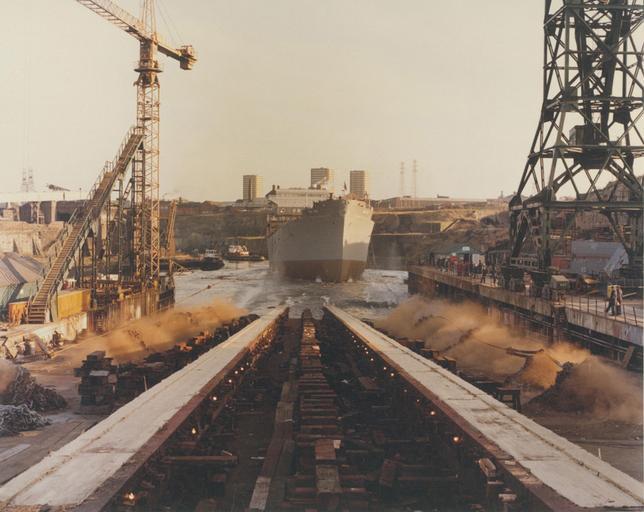MAKE A MEME
View Large Image

| View Original: | 'Vishva_Pallav'_afloat_after_launch.jpg (961x764) | |||
| Download: | Original | Medium | Small | Thumb |
| Courtesy of: | www.flickr.com | More Like This | ||
| Keywords: sunderland shipbuilding ship launches shiplaunches cargo ship cargoship shipyard launch maritime heritage maritimeheritage colour photograph colourphotograph deptford yard deptfordyard river wear riverwear sunderland shipbuilders ltd sunderlandshipbuildersltd shipping corporation of india shippingcorporationofindia crane rail water rope chain buildings splash staircase platform frame structure debris steel metal piles soil dust dust particles dustparticles 'vishva pallav' vishvapallav afloat 3 march 1980 3march1980 stilts workers people clothes windows doorway porthole port marine engineering marineengineering supplies industrial bank timber wood bolts plate cylinder telegraph chimney momentous surreal historical document historicaldocument comradeship sunderland history fair sunderlandhistoryfair 7 june 2014 7june2014 vessels architecture road building structure building infrastructure outdoor sport View of 'Vishva Pallav' afloat on the River Wear after launch at the Deptford Yard of Sunderland Shipbuilders Ltd, 3 March 1980 (TWAM ref. DS.DOX/4/PH/3/11). Tyne & Wear Archives is proud to present a selection of images from its Sunderland shipbuilding collections. The set has been produced to celebrate Sunderland History Fair on 7 June 2014. It's a reminder of the thousands of vessels launched on the River Wear and the many outstanding achievements of Sunderland’s shipyards and their workers. These photographs reflect Sunderland’s history of innovation in shipbuilding and marine engineering from the development of turret ships in the 1890s through to the design for SD14s in the 1960s. The Sunderland shipbuilding collections are full of fascinating stories. Some of these are represented in this set, such as the ‘Rondefjell’, launched in two halves on the River Wear by John Crown & Sons Ltd and then joined together on the River Tyne. The set also shows the vital part that Sunderland’s shipbuilding industry played during the First World War. William Doxford & Sons Ltd built Royal Naval destroyers such as HMS Opal, which served in the Battle of Jutland, while other yards constructed cargo ships to help keep these shores supplied. (Copyright) We're happy for you to share these digital images within the spirit of The Commons. Please cite 'Tyne & Wear Archives & Museums' when reusing. Certain restrictions on high quality reproductions and commercial use of the original physical version apply though; if you're unsure please email archives@twmuseums.org.uk View of 'Vishva Pallav' afloat on the River Wear after launch at the Deptford Yard of Sunderland Shipbuilders Ltd, 3 March 1980 (TWAM ref. DS.DOX/4/PH/3/11). Tyne & Wear Archives is proud to present a selection of images from its Sunderland shipbuilding collections. The set has been produced to celebrate Sunderland History Fair on 7 June 2014. It's a reminder of the thousands of vessels launched on the River Wear and the many outstanding achievements of Sunderland’s shipyards and their workers. These photographs reflect Sunderland’s history of innovation in shipbuilding and marine engineering from the development of turret ships in the 1890s through to the design for SD14s in the 1960s. The Sunderland shipbuilding collections are full of fascinating stories. Some of these are represented in this set, such as the ‘Rondefjell’, launched in two halves on the River Wear by John Crown & Sons Ltd and then joined together on the River Tyne. The set also shows the vital part that Sunderland’s shipbuilding industry played during the First World War. William Doxford & Sons Ltd built Royal Naval destroyers such as HMS Opal, which served in the Battle of Jutland, while other yards constructed cargo ships to help keep these shores supplied. (Copyright) We're happy for you to share these digital images within the spirit of The Commons. Please cite 'Tyne & Wear Archives & Museums' when reusing. Certain restrictions on high quality reproductions and commercial use of the original physical version apply though; if you're unsure please email archives@twmuseums.org.uk | ||||